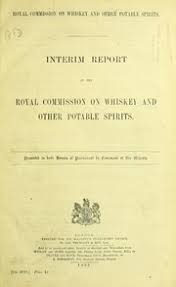In my article about the 1st Nordic Rum Fest, in the July issue of GOT RUM ?, I wrote that for years now the Rum Family had been discussing production techniques, quality, authenticity, sugar, additives, etc. Until a recent past this discussions seemed “the voice of one crying in the wilderness”: things for Staff Only, Rum Geeks, or worse, incurable Rum Nerds, without any influence in the hard, real world of Rum Business. Then, things changed and now a considerable number of consumers and Rum Fests visitors (not experts or professionals, but ordinary visitors) ask questions about several technical points. They want to know what they drink and what exactly they pay the price of the bottle for.
But there is more. There is a real debate going on, among producers and experts, on the future of rum, on what it is or what it should be, on the Regulations about it etc. Great part of this debate is concentrating on the new Regulations concerning the Geographical Indication in Jamaica and Barbados. This cannot come as a surprise, since Jamaica and Barbados have such a prominent role in the history of rum and are now at the cutting edge of premium rum production. This broad debate might be summed up under just one title, which might be: Tradition and Innovation in the rum industry.
As Rum Historian, this is an issue I am very interested in, but one on which I do not have clearly defined ideas yet. I am not a distiller, nor a producer or a lawyer, therefore I do not understand well some technicalities of the discussion and their concrete commercial implications.
And yet, when we speak about “Tradition”, History comes into play and here I think I can make a contribution. For a start, I believe it is useful to take a look at what the rum business was really like at the beginning of the XX century. It was a crucial moment, it might be said that the modern industry of spirits was born just in those years: the years when the sale of bottled rum started to grow, when brands, labels and marketing got off the ground. The legal frame within which both industry and consumers operated was still nebulous. If I understand correctly, the few attempts to define the product had come mainly from the Excise and Customs, that is, from the need to tax the different products in an accurate way. But by then that was not enough.
Then, in … along comes the Islington Prosecutions. It was a large and complicated judiciary case about the selling of Irish and Scotch whiskey that, according to the prosecution, were not “of the nature, substance, and quality” of Irish and Scotch whiskey. Due to the importance of the matter for both the British economy and the health of the public, the British Parliament appointed a Commission to study the question and recommend a solution. The Commission dealt bravely with the thorny issues of the legal definition of the products, the production methods, the raw materials and geographical origin.
I do not believe that such a mass of evidence from industry professionals had ever been collected before, and perhaps even afterwards: “Our first setting took place on the 2nd March, 1908, since which date we have held 37 sittings “for the purpose of taking evidence”. At such sittings we examined 116 witnesses and considered various document submitted to us. Since the commencement of the inquiry several of us have visited certain distilleries employed in the manufacture of whiskey in Scotland and Ireland, and also a number of distilleries and warehouses at which brandy is manufactured and dealt with in France.”
Eventually, the Commission published a voluminous text consisting of the minutes of evidence, reports and many appendices. I think it is a very important document, full of thought-provoking information. The Commission deals mainly with whiskey, but a lot of information can be found on rum and other spirits too.
In the next articles I am going to present you with a small part of the text, focusing obviously on rum. In brackets you will find my comments, few and brief, written to make the text more comprehensible to today’s readers. The minutes of evidence always follow the same pattern: a question asked by a Commissioner is followed by the Witness’s answer. It is clear from the context that sometimes the witnesses had sent a précis written before the hearing. The number before every question simply indicates the chronological order of the questions.
Let’s get started.
From the “ MINUTES OF EVIDENCES taken by the ROYAL COMMISSION on WHISKEY AND OTHER POTABLE SPIRITS”
FIRST DAY, Monday, 2nd March, 1908 At the Westminster Palace Hotel
Mr. Arthur John Tedder, called
- What is your position in the Excise Service? – Chief Inspector of Excise
- Could you give a definition of plain spirits? – Plain spirits means any British spirits which have not any flavours communicated thereto or ingredient or material mixed therewith.
- How would you define spirit at proof strength? – The strength of proof is that ascertained by Sykes hydrometer. It is defined in the Spirits (Strength Ascertainment) Act of 1818 as “spirit which at a temperature of 51° F. weighs exactly twelve-thirteenth parts of an equal bulk of distilled water. ”Practically it is a mixture of almost equal parts of absolute alcohol and water.
- And the object of blending, as a rule, is, is it not, to obtain a particular strength for a particular customer, or to obtain particular flavours to a certain customer’s desire? – That is what the blenders would tell you.
- What other explanation could you offer of it? – It makes all the difference as to the cost of the blend what a spirit you put into it. Of course, there is a very great deal in blending spirits to get a particular flavor.
[A legal definition of whiskey did not exist yet. Many witnesses in the whiskey business asked for a strict, narrow definition for both bottled or bulk whiskey. They mostly stated that only the produce of the pot still could be rightly called Scotch or Irish Whisky, and not the “neutral spirit” produced by the patent still. They also asked that only local raw material should be used and that ageing should be compulsory. The Commissioners were not convinced because the patent still and also foreign raw materials had been de facto largely used to produce both Scotch and Irish whiskey for many years. Moreover, according to some Commissioners, maybe Patent Still whiskey was successful not only because it was cheaper than pot still whiskey, but also because its flavor was more suited to the changes in taste of the public. This could be true of rum as well, since those were the years of the phenomenal success of Cuban “Ron lìgero”]
SIXT DAY, Wednesday, 18th March, 1908 Mr. Frank Litherland Teed, called
- You also, I believe, made a series of analyses of Jamaica rum and also analysed two samples of rum sold as Jamaica rum? – Yes, the allegation against the vendors was that it was not Jamaica rum.
- The defendants pleaded guilty? – Yes. In the first case they pleaded guilty, and in the second case they pleaded guilty, too.
- Those two cases were taken under a different Act? – Yes, the Merchandise Marks Act.
- You are prepared to give, if called upon, similar evidence as to brandy and rum? – Yes.
- You are confining yourself now to whiskey? – Practically entirely.
- You have a certain opinion about the importation of so-called “Imitation Rum”? – Yes
- What are those views? – I have never heard of imitation rum being on sale to the public anywhere. I believe that all imitation rum that is imported is fraudulently sold as rum.
TWENTY-THIRD DAY, Monday, 6th July, 1908. Mr. John Heron called
- Can you tell us anything with the regard to the secondary products of Jamaica rums as compared with those of Demerara rum? – The secondary products of Jamaica rum are very much larger in quantity than in Demerara rum. I have made very little analysis of Demerara rum, but the analyses I have made practically conform to a silent spirit.
- Is there something also connected with the acidity of Jamaica rum which rather differentiates it from other rum? – Yes, it has a very high acidity.
- You have given in your précis certain maximum and minimum values for the acids, aldehydes, furfurals, and esters of rum. Would you kindly tell us what they are? – I have made analyses of what I knew to be absolutely pure Jamaica rums. I have got those analyses here. They varied from something like 900 to a little over 200 of esters.
- That is from 900 to 200 of the esters and ethers? – Of esters and ethyl acetates. I find nothing less than 200. The limits are from 900 to 212.
- How do the acids run? – From 288, roughly 290, to 65.
- And the aldehydes? — From 109 to 19, and the furfurals from 14 to 15. What I laid particular stress upon was the amount of the esters. In fact, I went so far as to lay down a test for pure Jamaica rum, that a sample of pure Jamaica rum should contains 200 or more parts to the 100,000 of esters.
- I think it would be useful to the Commission if you would give them some indication of the number of samples of rum that you have had on which these maxima and minima you have given us are based? — I really could not give you that straight off, but I should say I have analysed some hundreds of samples, and I may say that among the samples I have analysed, which were bought generally from licensed premises, some 5 to 10 per cent. Were genuine samples, and the others were all adultered.
[The Commission was not convinced and asked many questions about the analyses]
- What was the result of this want of genuineness? Did it produce injury to health to the person consuming the rum? — It is not as good medicinally.
- Is it injurious to health? — I cannot say that it is injurious to health.
- When it is not quite so good in there any effect you can mention of the worse samples of rum compared with the better? — It has not the stimulating properties for one thing, or the reviving properties or the vivifying properties. Would the bad quality of rum produce drunkenness sooner that the good or not? — I really could not say.
- You say it has not the stimulating properties. What is the injury produced by not having the stimulating quality? Would the bad quality of rum produce drunkenness sooner than the good or not? — I really could not say.
- Is there an evil you want to have remedied? – The evil is that a lot of rum is on the market described as pure Jamaica rum which is not Jamaica rum at all.
- That is a very fair answer. Are these bad qualities of rum, do you think, manufactured in the United Kingdom or in Jamaica? — Good qualities have simply been diluted by the addition of silent spirit.
- Are these bad qualities manufactured in the United Kingdom or in Jamaica? – I should say they are manufactured in the United Kingdom.
- And represented as Jamaica rum? – Yes.
Well, I think it is enough for a first sample.
Marco Pierini
PS: I published this article on January 2020 in the “Got Rum?” magazine. If you want to read my articles and to be constantly updated about the rum world, visit www.gotrum.com


